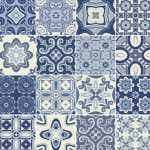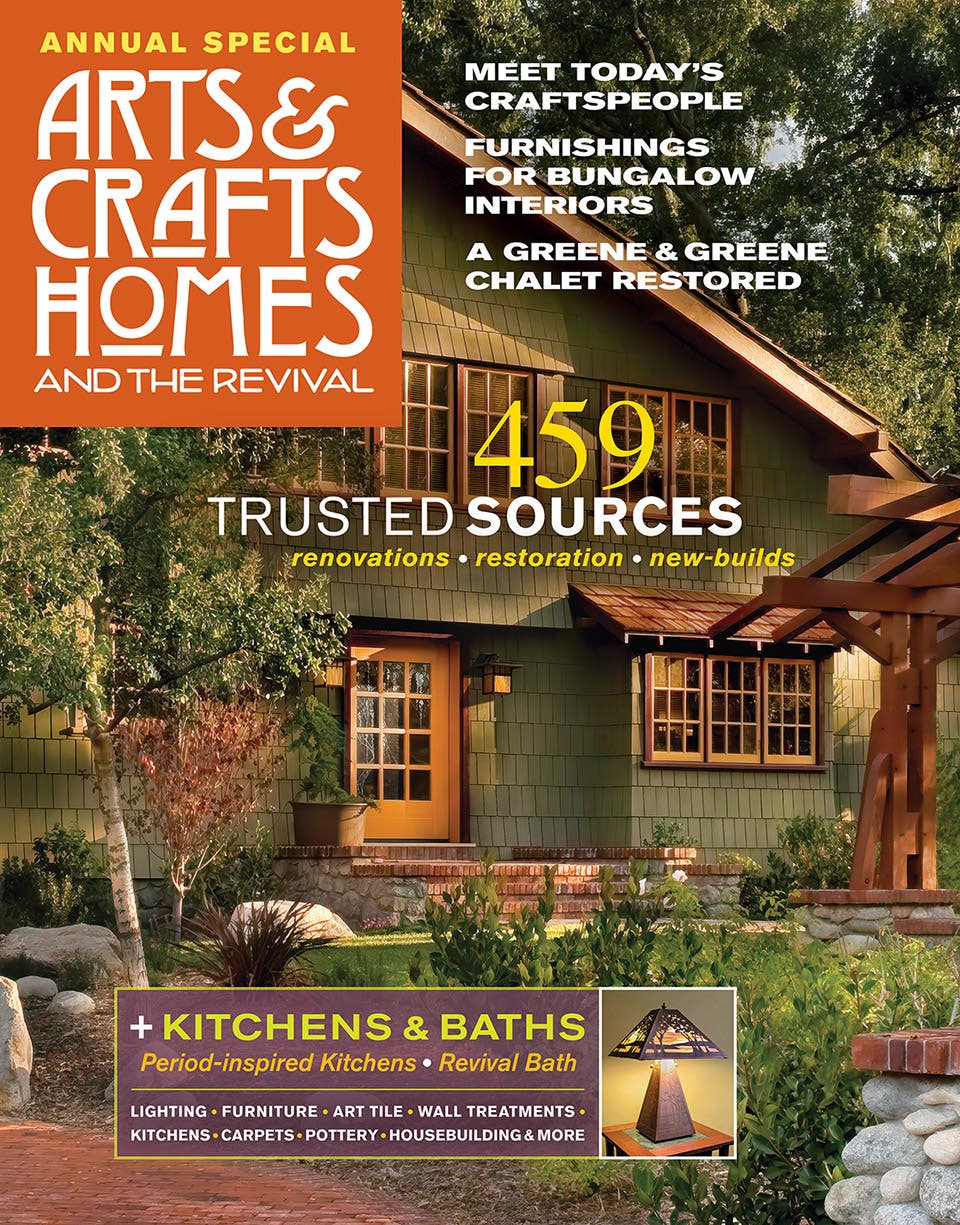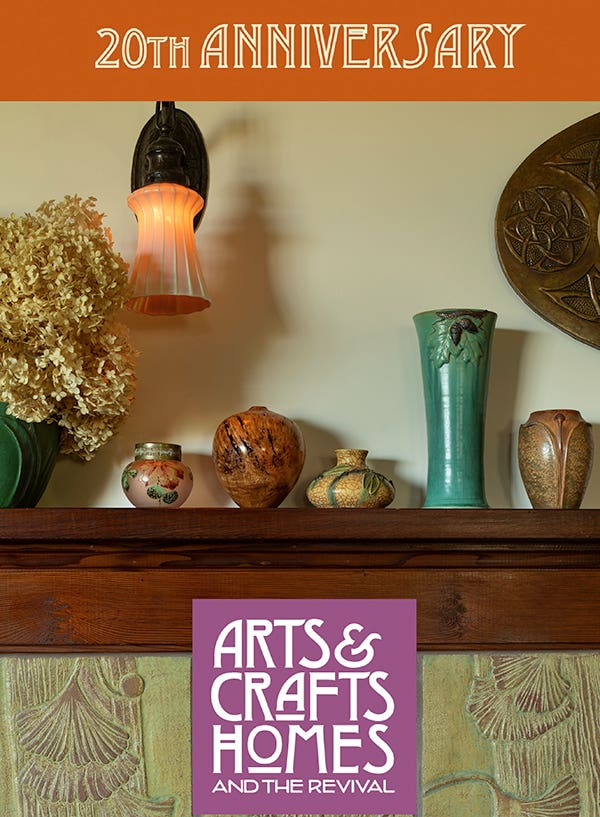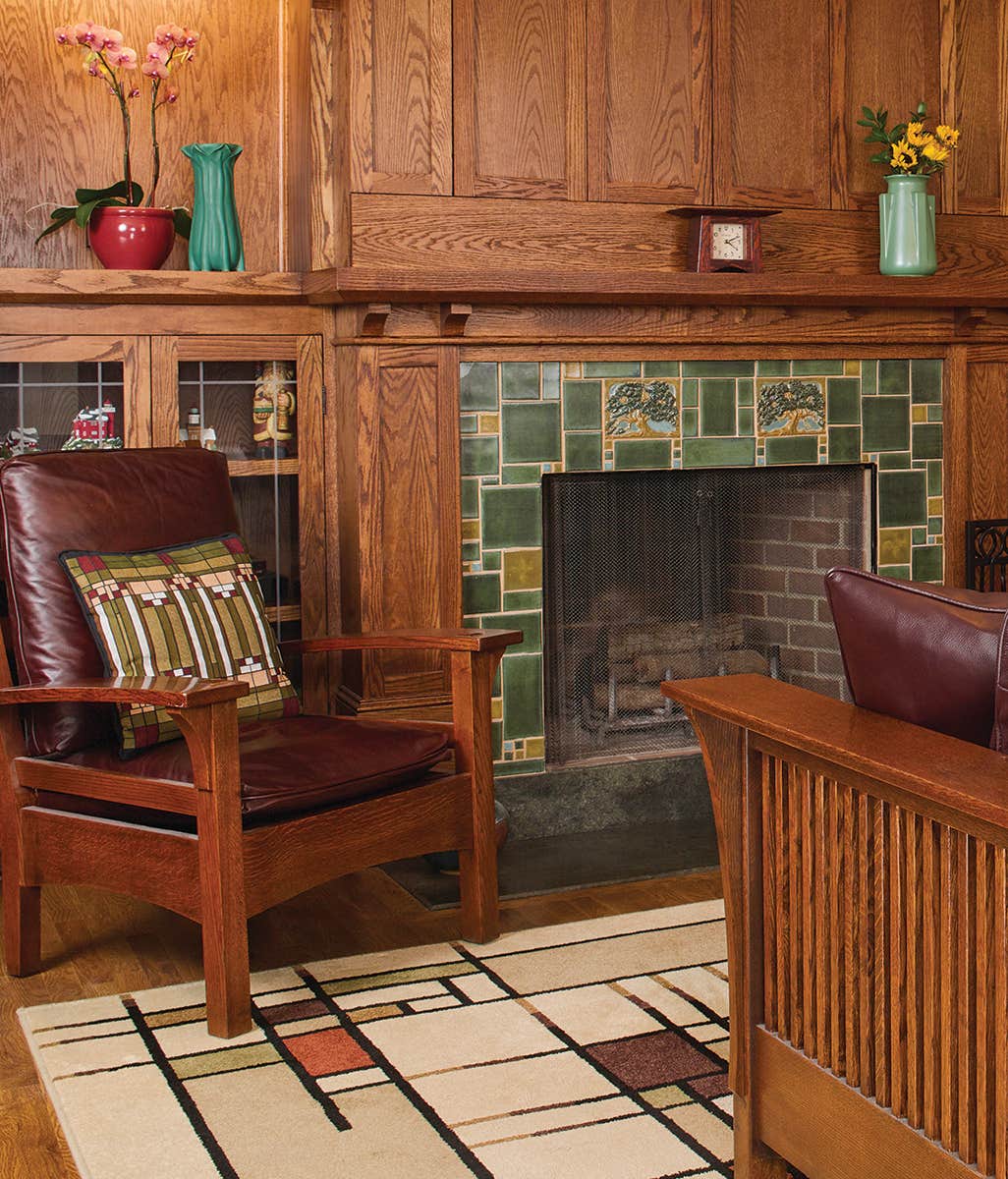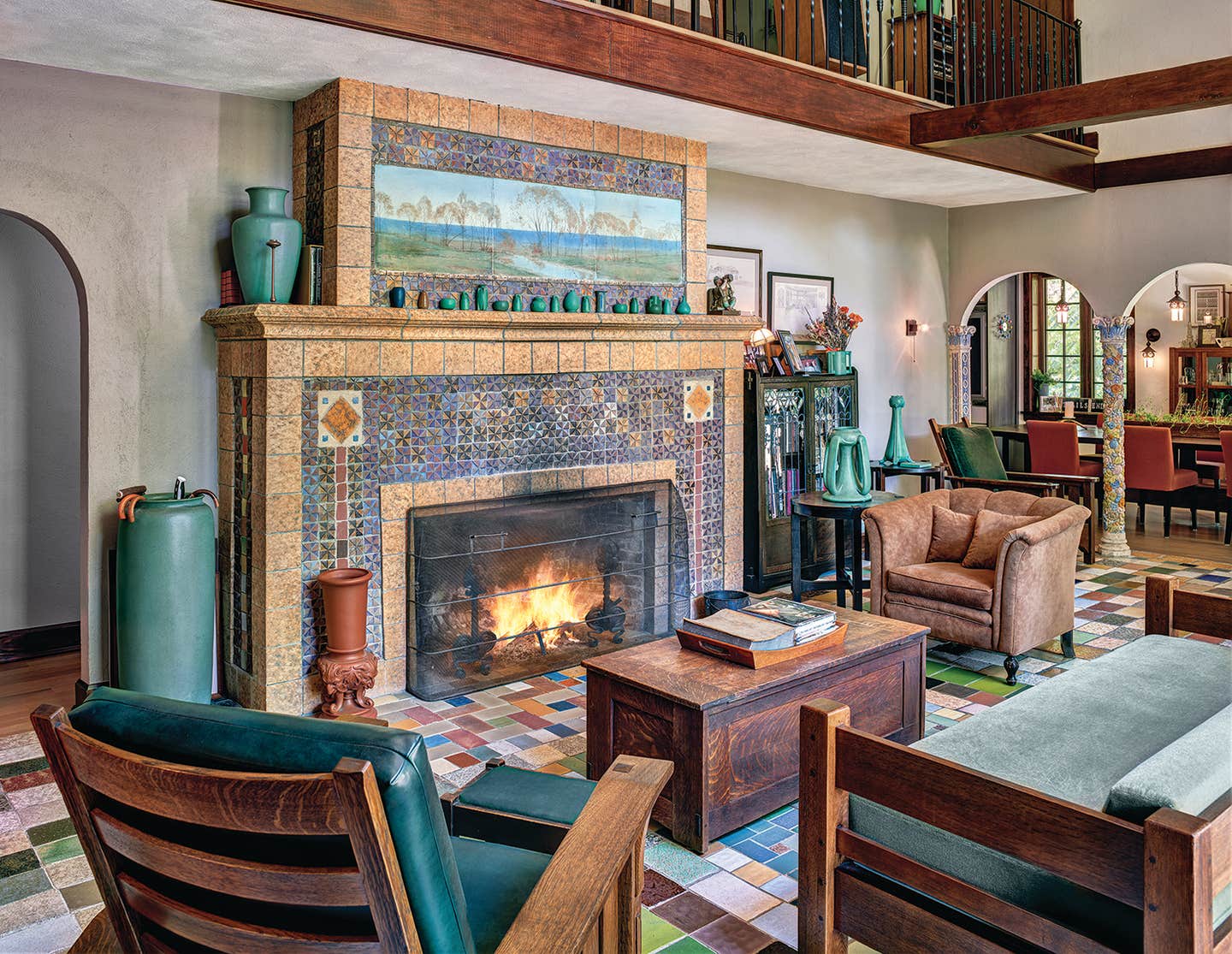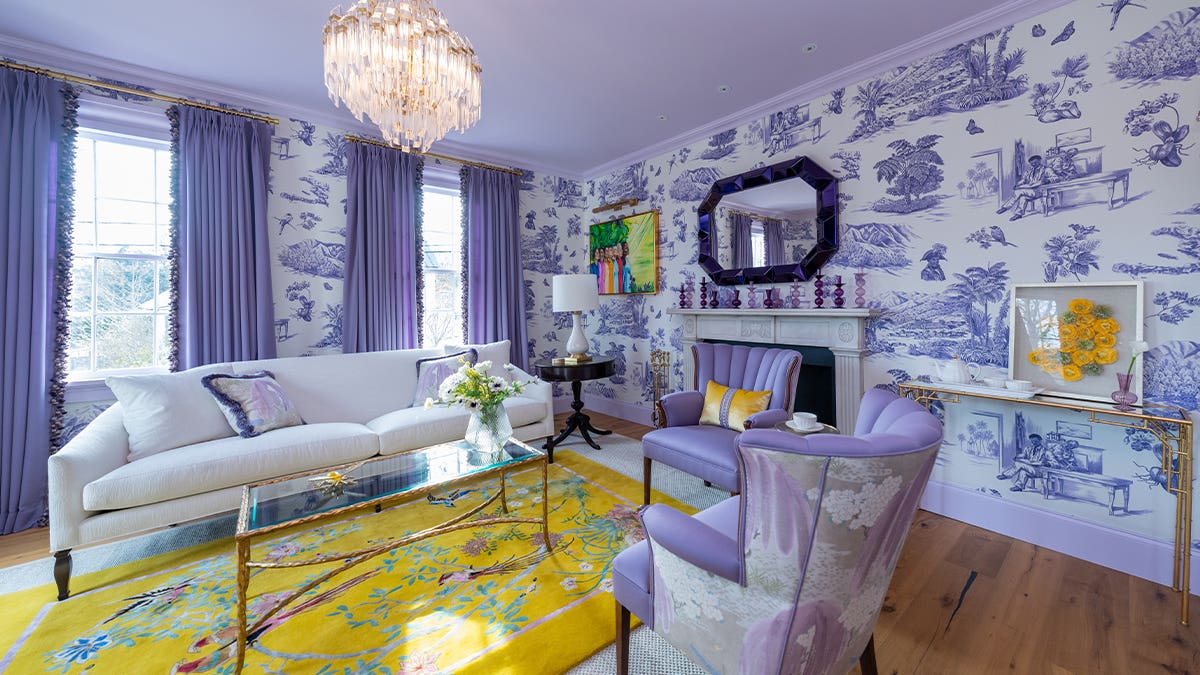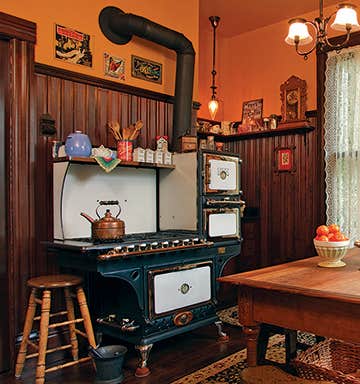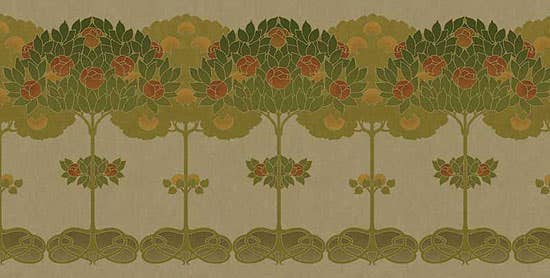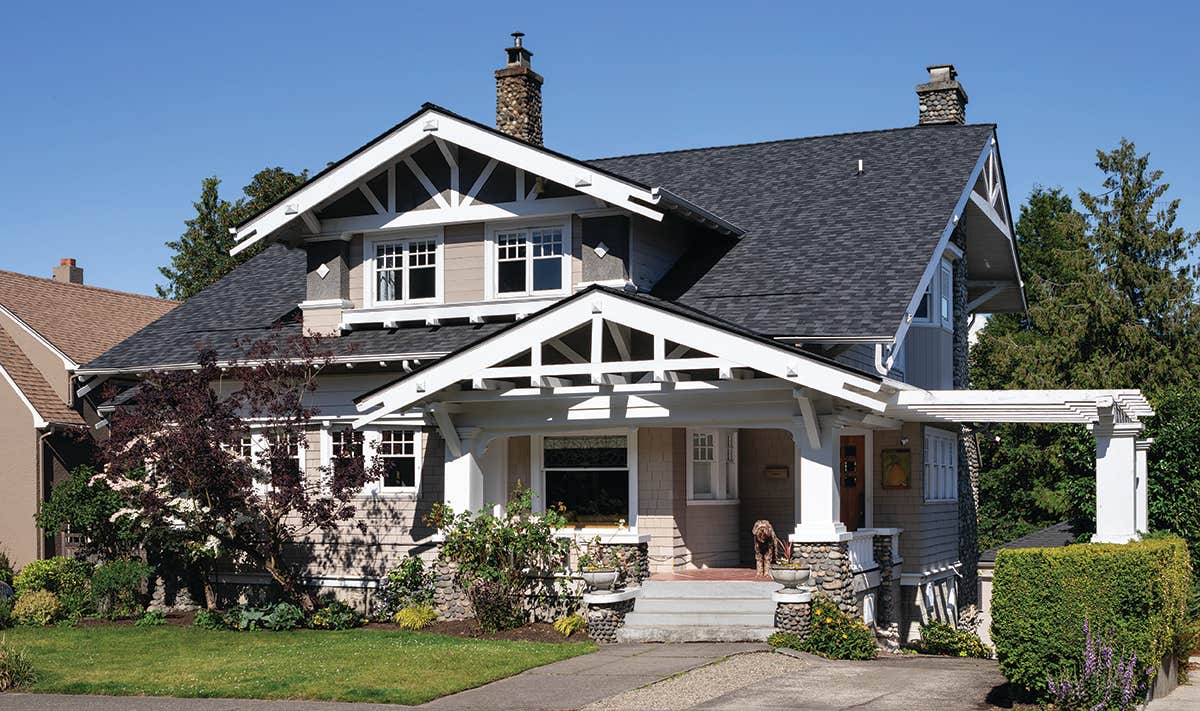Antiques and Revival Furniture & Art Objects
Furniture that we might call “Arts & Crafts” is harder to identify than, say, Chippendale or Victorian Gothic. So many designers in so many places embraced Arts & Crafts philosophy: in London, New York, Glasgow, Chicago, Pasadena.
The furniture produced was diverse, even if its origin and age are identifiable.
“Taken as a whole, this furniture is even contradictory,” says contemporary furniture maker and author Kevin Rodel. “Best known for pieces that emphasize simplicity, solidity, and straight lines (e.g., Stickley’s oak furniture), the Arts & Crafts movement also produced works of refined proportions, sinuous lines, and complex ornamentation.”
You’ll find even more diversity today. Not only are various original designs being reproduced or closely interpreted, but also furniture makers are creating their own designs and fusions.
As was true a hundred years ago, Arts & Crafts furniture may be handmade one piece at a time, or produced in a factory.
“For those new to the subject, Stickley’s reductionist furniture stands for the whole, broad movement,” Rodel explains. He says that today’s artisans and manufacturers are creating work with influences ranging from European and Asian design to that of the 20th-century studio furniture movement.
Arts & Crafts Homes and the Revival covers both the original movement and the ongoing revival, providing insight for restoration, kitchen renovation, updates, and new construction. Find sources for kitchen and bath, carpet, fine furniture and pottery, millwork, roofing, doors and windows, flooring, hardware and lighting. The Annual Resource Guide, with enhanced editorial chapters and beautiful photography, helps Arts & Crafts aficionados find the artisans and products to help them build, renovate, and decorate their bungalow, Craftsman, Prairie, Tudor Revival, or Arts & Crafts Revival home.
